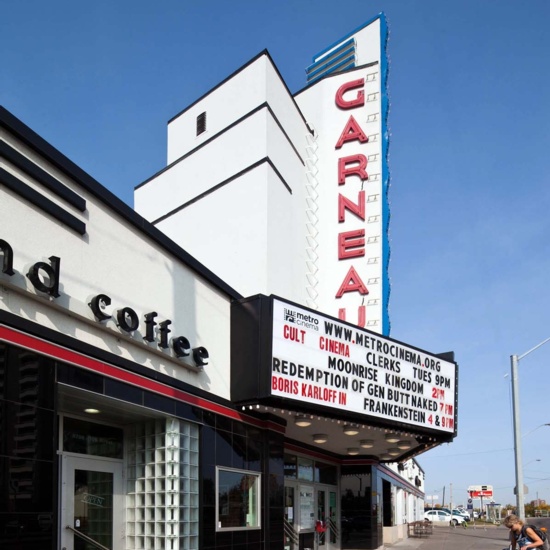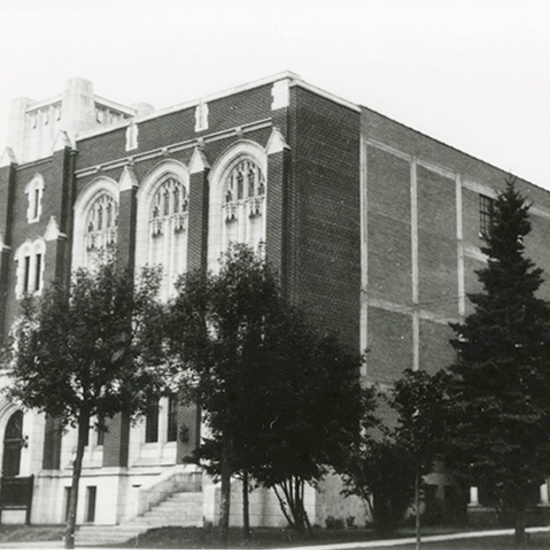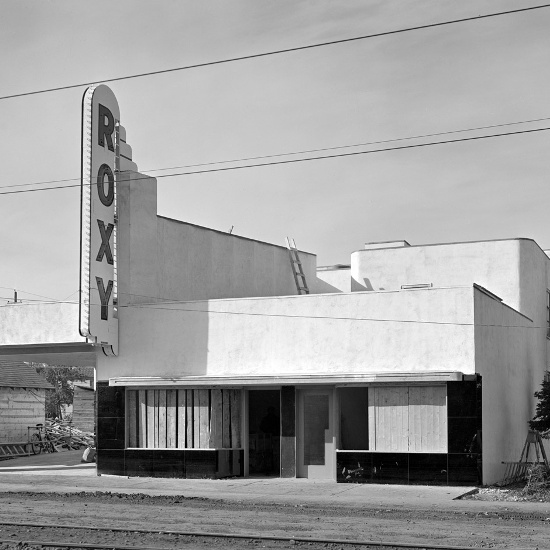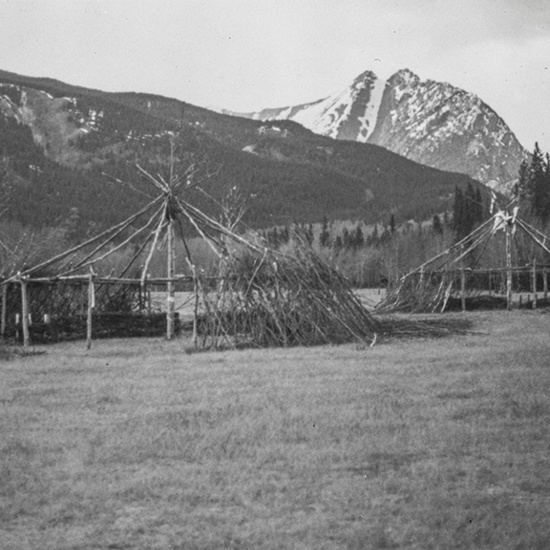The War Years: 1914-1945
Between 1914 and 1945 Edmonton underwent phenomenal change as the Great War, the Depression and the Second World War left their mark.
Between 1914 and 1945 Edmonton underwent phenomenal change as the Great War, the Depression and the Second World War left their mark.
During the inter-war years, Edmonton experienced periods of decline that were followed by periods of new growth. The completion of new buildings, and new architectural styles, followed these cycles with many more buildings being constructed during the late 1920s and 1930s. By the end of the Second World War, another boom would greatly change the skyline and alter the map of Edmonton. If the war years represented slow, conservative growth, the post-war Modern era would usher in rapid expansion and change.
Historical Context
In August of 1914, the major European powers including Britain, found themselves at war. As it was still legally a British colony, Canada was also at war. Many Canadians responded enthusiastically to the call to arms, including First Nations and Metis people, who despite their Treaty Right to avoid enlistment, went abroad to fight.
On June 28, 1915, another major event occurred, which would forever change Edmonton. The North Saskatchewan River rose twelve meters above its normal level, turning streets into rivers, submerging neighborhoods and placing Indigenous ceremonial sites under nearly a meter of water. Almost 800 families lost their homes and many businesses were destroyed.
Almost a generation later, all the land in the river valley reverted to the city for non-payment of taxes. The flooded lands eventually become an important part of modern Edmonton, namely, the river valley park system.
Edmonton moved quietly into the 1920s, with many soldiers and their families returning home, and a decade of slow, restrained growth followed. Indigenous Soldiers, despite their service, returned to a country that refused to afford them similar treatment as their brothers in arms.
An upturn in the economy came in the early 1940s with the effects of the Second World War. Wartime activities, including flight training and the construction of the Alaska Highway and the Canol pipeline, brought thousands of Allied servicemen and civilian contractors into Edmonton. It also meant hard times for the Enoch Cree Nation, whose reserve lands were used as a bombing range and training grounds.
Effects on Home Construction
Due to wartime shortages existing houses were converted into apartments during the 1940s. For new residential construction, the Foursquare style lessened in popularity as people began to favour the smaller, more efficient Arts and Crafts style bungalow. This style often used Clinker bricks, which rarely were seen outside of Edmonton.
The federal government planned and paid for immigration halls to provide free short-term accommodation for agricultural settlers.
Built near main railway stations to accommodate the influx of new immigrants, Edmonton’s Immigration Hall was built solidly of brick and reinforced concrete, and began operation in 1931. Another important immigration story is the erection of the Al Rashid Mosque in 1938. Although designed and constructed by a Ukranian-Canadian contractor, the building would continue to be a beacon and home for Muslims in and around Edmonton. Although Edmonton was slow to adapt to influences from abroad, architectural styles such as Art Deco, Byzantine and International did begin to creep in near the end of this period.
Details
Duration
1914 to 1945
Structures
97 Street Safeway
Balfour Manor
Birks Building
Bowker Building
Canadian National Railway Station-1928
Capitol Theatre
Dr. Eardley Allin Residence
Edmonton Public Library
El Mirador Apartments
Field Log House
Frederick S. Jones Residence
Garneau Theatre
Glenora School
H.V. Shaw Building
Hecla Block
Highlands School
Highlands United Church
Hotel Macdonald
Hudson's Bay Company Building
MacLean Residence
Margaret Marshall Residence
Masonic Temple- Saskatchewan Lodge #92
McLeod Building
McTaggart Residence
Oliver School
Olson-Watt Residence
R. W. McKinnell Residence
Richard Wallace Residence
Roxy Theatre
Salvation Army Citadel
Sundance or Thirst Lodge
Sweatlodge
Tipi
Trudel Residence
Varscona Theatre
William Brown Residence
Architects
William G. Blakey
Richard Palin Blakey
Cecil Burgess
John Dow
H.L. Gage
David Hardie
Joseph N. Côté
Percy Nobbs
George Hyde
Frederick S. Jones
John Rule
Ernest Litchfield
Gordon Wynn
Peter Rule
William Brown
Fred H. MacDonald
George Heath Macdonald
Ross MacFarlane
Herbert Alton Magoon
First Nations
John Schofield
Dewar, Stevenson, and Stanley
Ralph Henry Trouth
George E. Turner
Unknown
Hand & Blackstead
MacDonald & Magoon Architects
Nobbs & Hyde
Ross & Macdonald Architects







































